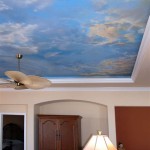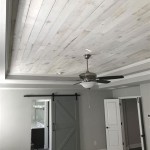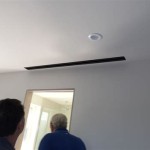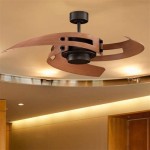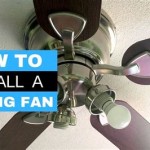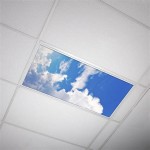What to Cover Popcorn Ceiling With
Popcorn ceilings, a popular choice in the mid-20th century, have fallen out of favor in recent years. Their textured surface, while once considered trendy, can now appear dated and even detract from the overall aesthetics of a room. The good news is that covering a popcorn ceiling is a manageable project that can breathe new life into your space. This article will explore different options for concealing popcorn ceilings, providing an overview of their pros and cons to help you make the best decision for your home.
1. Skimming the Ceiling
Skimming the ceiling involves applying a thin layer of drywall compound over the popcorn texture. This method effectively hides the popcorn while creating a smooth, even surface ready for painting. Skimming is often the most cost-effective option, especially for smaller areas.
Here’s a breakdown of the pros and cons of skimming:
Pros:
- Cost-effective – This is generally the most economical option for covering a popcorn ceiling.
- Relatively easy – Skimming is a DIY-friendly project, suitable for homeowners with basic construction skills.
- Minimal disruption – Skimming requires minimal removal of existing materials, making it a less disruptive process.
Cons:
- Time-consuming – Skimming requires multiple layers of drywall compound and ample drying time.
- Requires patience – Achieving a perfectly smooth finish requires careful preparation and application.
- May not fully conceal – For heavily textured popcorn ceilings, skimming may not fully hide the original texture.
2. Installing Drywall
Installing drywall over the popcorn ceiling is a more comprehensive solution that provides a completely smooth and flat surface. This method involves removing the existing popcorn, attaching drywall panels to the ceiling joists, and then finishing the drywall. While more labor-intensive, it delivers a superior finish.
Here’s a closer examination of the pros and cons of installing drywall:
Pros:
- Permanent solution – This method offers a long-lasting and durable finish.
- Smooth and even surface – Drywall provides a perfectly smooth canvas for painting or wallpapering.
- Improved insulation – New drywall can enhance the insulation qualities of your ceiling.
Cons:
- Higher cost – Drywall installation is more expensive than skimming.
- Greater disruption – Removing the popcorn and installing drywall requires more extensive renovation.
- Requires professional help – Installing drywall is often best left to experienced professionals.
3. Using a Ceiling Panel System
Ceiling panel systems offer a quick and convenient way to cover popcorn ceilings. These pre-fabricated panels typically come in various sizes and finishes, allowing you to customize the look of your ceiling. They’re easy to install, often requiring minimal preparation.
Here's a breakdown of the pros and cons of using ceiling panel systems:
Pros:
- Fast installation – Ceiling panel systems are generally quick to install, minimizing disruption.
- Variety of styles – There are countless styles and finishes available for ceiling panels, including wood, tile, and metal.
- Easy maintenance – Ceiling panels are usually easy to clean and maintain.
Cons:
- Higher cost – Ceiling panel systems can be more expensive than skimming or installing drywall.
- Possible gaps – Installation may require careful measurement and fitting to avoid gaps between panels.
- Limited customization – The design and materials of the panels are generally pre-determined.
4. Painting the Popcorn Ceiling
While not a true hiding option, painting the popcorn ceiling can refresh its look and make it appear less noticeable. Choose a light, neutral color to help blend the texture and reduce the prominence of the popcorn.
Here’s a look at the pros and cons of painting popcorn ceilings:
Pros:
- Most affordable option – Painting is typically the most cost-effective way to update your ceiling.
- Minimal preparation – Painting requires minimal preparation, making it a less disruptive process.
- Easy DIY project – Painting a popcorn ceiling is a DIY-friendly project.
Cons:
- Only a temporary solution – Painting doesn’t permanently hide the popcorn texture.
- Limited color options – Light, neutral colors often work best for blending the texture, limiting color choices.
- Requires frequent touch-ups – Painted popcorn ceilings may require more frequent touch-ups than smooth ceilings.
When choosing a method to cover your popcorn ceiling, consider several factors, including your budget, available time, desired finish, and level of DIY expertise. Each approach offers unique advantages and disadvantages, so weigh these carefully to find the best solution for your specific needs.

How To Cover A Popcorn Ceiling With Shiplap Sprucing Up Mamahood

Cover Popcorn Ceilings Armstrong Residential

The Best Way To Cover Popcorn Ceilings With Beadboard Shoe Makes New

How To Cover Popcorn Ceiling 8 Creative Ways Making Maanita

Decorative Ideas To Cover Popcorn Ceilings Artsy Rule

How To Cover Popcorn Ceilings A Turtle S Life For Me

Easily Cover Popcorn Ceilings With Shiplap

How To Plank A Popcorn Ceiling

A Simple Beautiful Solution For Covering Up Popcorn Ceilings The Happy Housie

How To A Cover Popcorn Ceiling Without Removing It Renoviso
Related Posts

